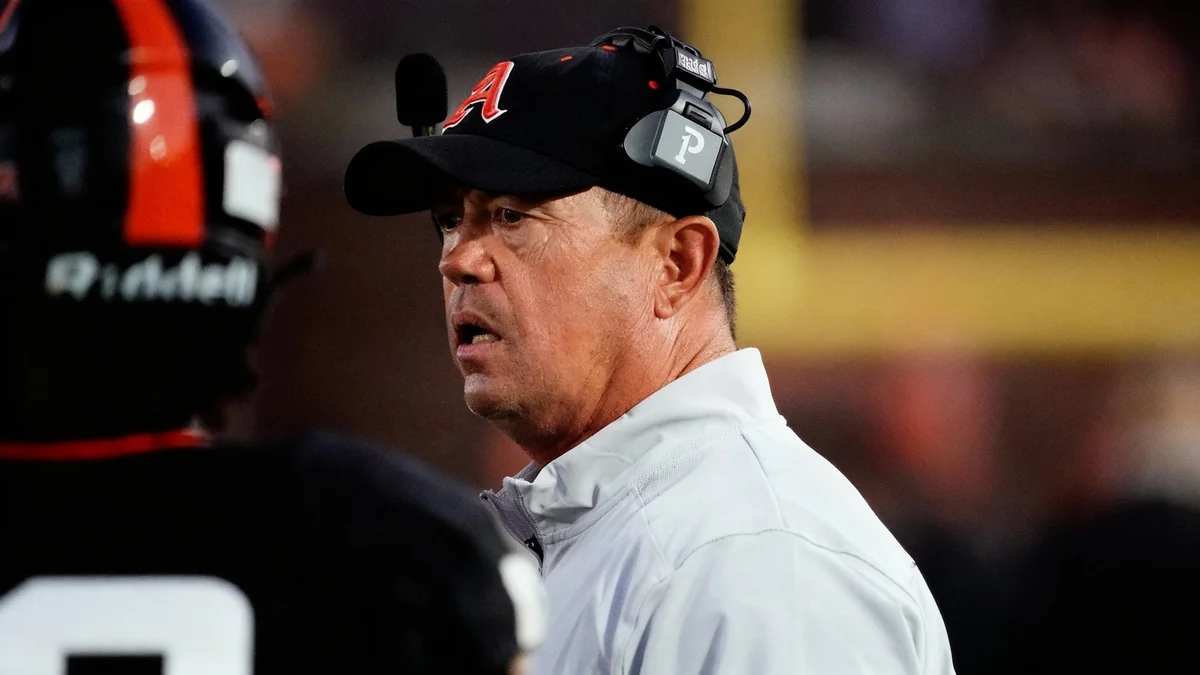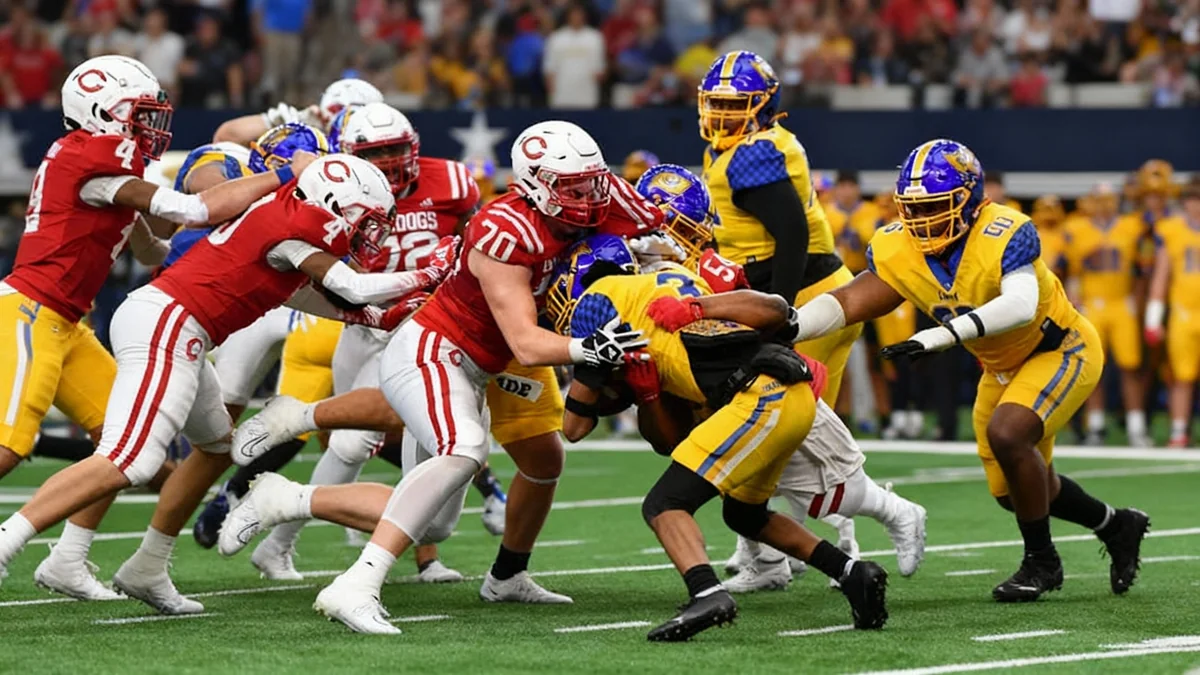Four high school football teams in Alabama are facing a combined travel distance of over 1,400 miles for the first round of the Class 7A playoffs. The total cost for these journeys is estimated to be around $75,000, placing a significant financial and logistical strain on the schools involved.
The extensive travel highlights the challenges inherent in the state's playoff structure, affecting teams in Region 1 and Region 4 who must traverse long distances to compete. This situation raises questions about the sustainability of such models for high school athletic programs.
Key Takeaways
- Four Class 7A football teams will travel a combined total of more than 1,400 miles for first-round playoff games.
- The estimated cost for travel, lodging, and meals for these teams is approximately $75,000.
- The long-distance matchups are a result of the current regional alignment in Alabama's high school football playoff system.
- The financial and logistical burdens impact not only athletic department budgets but also student-athletes' academic and physical well-being.
A Heavy Financial Burden
For many, Friday night lights represent the heart of local communities. However, the journey to the state championship comes with a hefty price tag, especially for teams in geographically distant regions. An estimated $75,000 will be spent by just four teams to participate in the opening round of the playoffs.
This figure is not just a line item in a budget; it represents a significant allocation of resources for public school districts. Athletic directors must coordinate complex travel plans that often involve charter buses, overnight hotel stays for dozens of players and staff, and multiple meals on the road.
These expenses must be covered by athletic department funds, which are often supported by ticket sales, booster clubs, and community fundraising. When a single playoff game costs a school upwards of $18,000, it can strain resources that could otherwise be used for equipment, facility maintenance, or supporting other sports programs.
Playoffs by the Numbers
- $75,000: Estimated combined cost for four teams.
- 1,400+ miles: Total round-trip distance covered.
- 4 teams: The number of Class 7A schools from Regions 1 and 4 facing this travel.
- 1 night: Minimum overnight stay required for many long-distance games.
The Toll on Student-Athletes
Beyond the financial costs, the extensive travel has a direct impact on the students themselves. Long hours on a bus can lead to fatigue, disrupting routines for sleep, nutrition, and academic work. A trip that spans several hundred miles means players are likely to miss a full day of school.
Coaches and educators express concern over the academic price of athletic success. While playoff appearances are a source of pride, ensuring students do not fall behind in their studies is a primary responsibility of any school. The travel schedule forces student-athletes to manage their time meticulously, balancing homework with game preparation in unfamiliar hotel rooms.
Physical readiness is another major concern. Arriving at a destination late the night before a game after a long bus ride is not ideal preparation for a high-stakes physical contest. The risk of fatigue-related injuries and suboptimal performance is a reality that teams must manage.
Understanding the Playoff Structure
The Alabama High School Athletic Association (AHSAA) organizes schools into classifications based on enrollment and then into regions for regular-season play. In the playoffs, teams from different regions are matched up. For large classifications like 7A, this can result in matchups between schools located at opposite ends of the state, such as teams from the Mobile area (Region 1) playing teams from the Huntsville area (Region 4).
Logistical Hurdles Behind the Scenes
Organizing travel for a high school football team is a complex operation. It involves more than simply booking a bus. Athletic departments must secure transportation capable of carrying over 50 players, coaches, and support staff, along with all their equipment.
Arranging Accommodations
Finding a hotel with enough available rooms on short notice can be a challenge, especially in smaller towns. The logistics also include planning team meals, from pre-game dinners to post-game nutrition, which must be coordinated while on the road.
These arrangements fall on the shoulders of athletic directors and coaching staff, adding another layer of responsibility on top of preparing their teams to compete. The process begins the moment the playoff matchups are announced, kicking off a race against time to secure all necessary reservations.
"Every dollar we spend on a long-distance playoff trip is a dollar that can't be used somewhere else," one athletic director noted. "It's a balancing act between providing the team with what they need to succeed and being fiscally responsible to the entire athletic program."
Exploring Potential Solutions
The recurring issue of extensive playoff travel has prompted discussions about potential adjustments to the system. While there are no simple answers, several ideas are often debated within the high school sports community.
One possibility is a realignment of regions to reduce the maximum travel distances required in the early rounds of the playoffs. Another suggestion involves using neutral-site venues for games between geographically distant opponents, though this would present its own set of logistical and financial challenges, including lost revenue from home-gate receipts.
As the costs and demands of travel continue to rise, school administrators and state athletic associations may need to re-evaluate the structures that govern postseason play. The goal remains to provide a fair and competitive championship tournament without placing an undue burden on the schools and, most importantly, the student-athletes who make Friday nights special.





